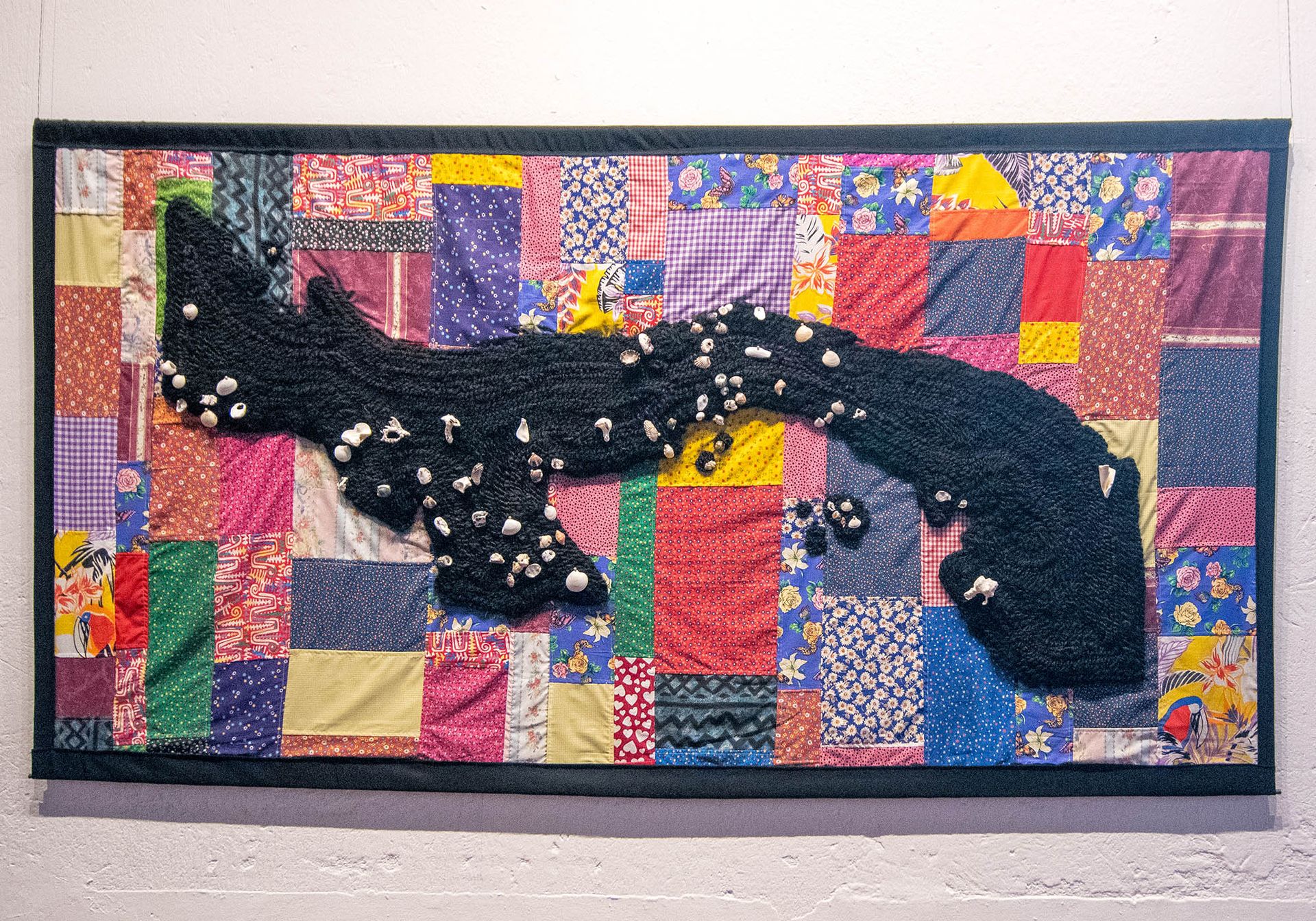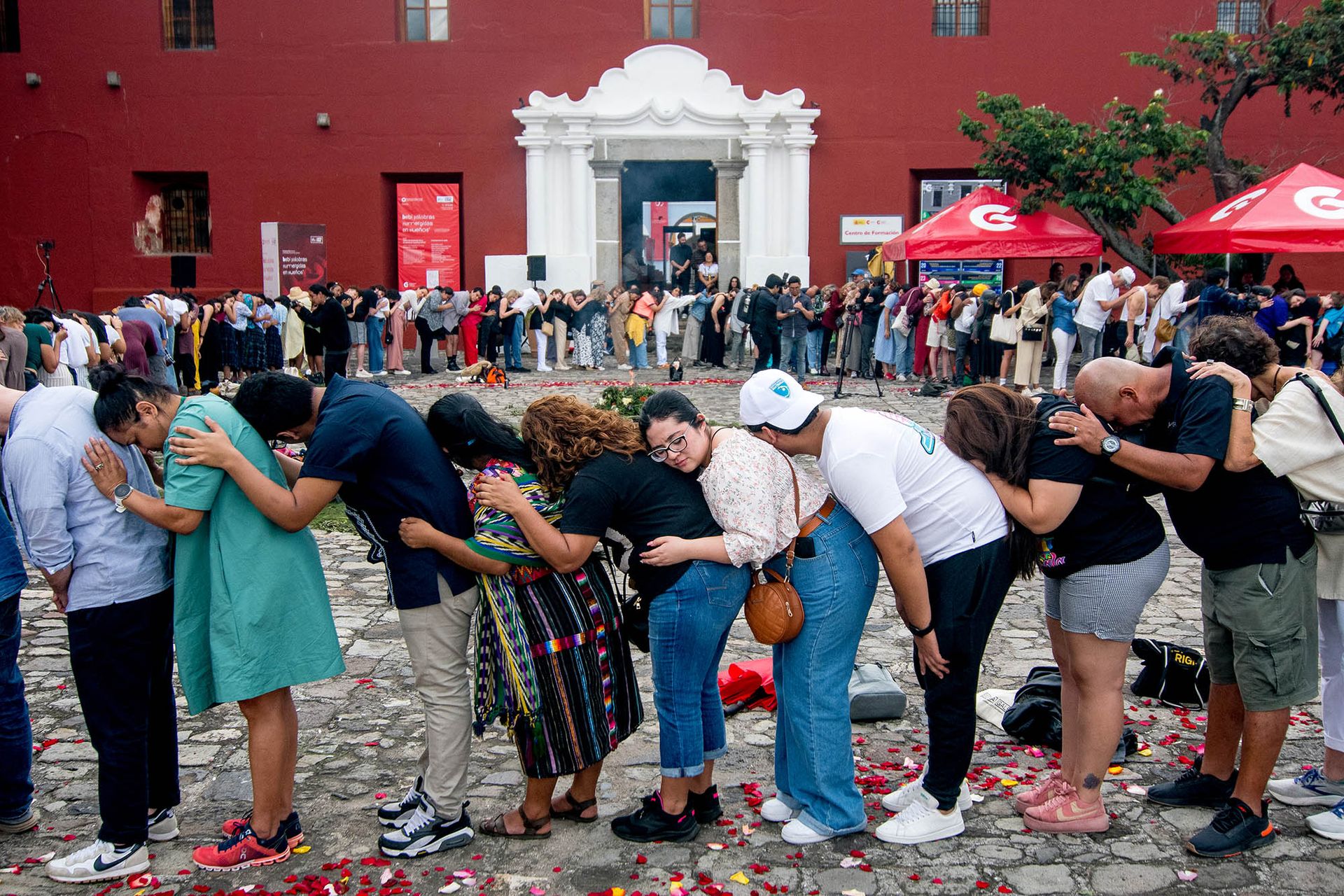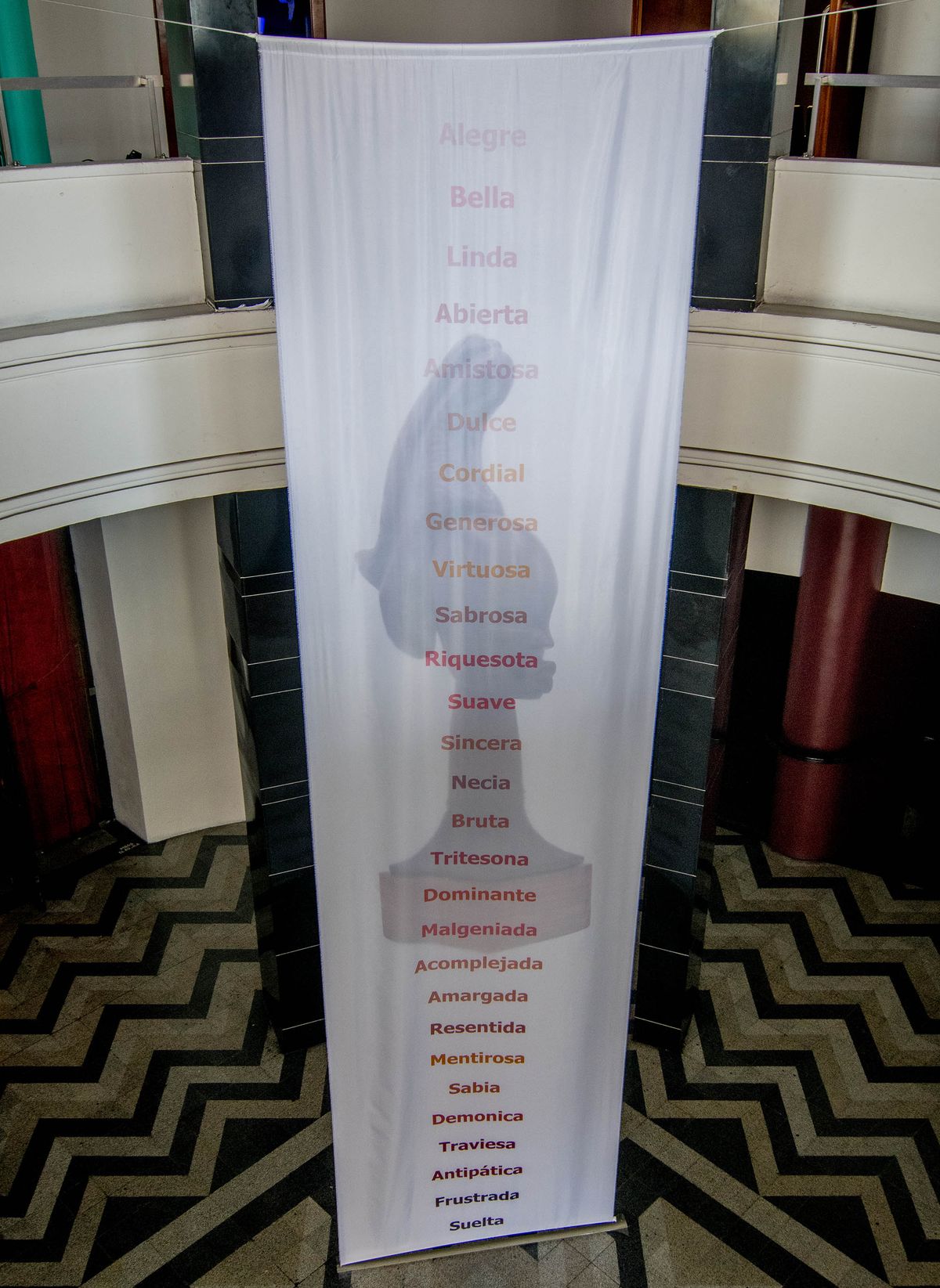At the heart of the XXIII Paiz Art Biennial in Guatemala is the question of how language manifests physically in our bodies and upon the environment. Titled Bebí palabras sumergidas en sueños (I drank words immersed in dreams), the 23rd edition of the biennial, which bills itself as the largest contemporary art exhibition in Central America, brings together 30 artists and collectives who explore ideas of translation and interpretation—of dreams, territories, bodies and movement. Its title comes from a line in Nací mujer (I was born a woman), a poem by the Guatemalan writer Maya Cú.
The exhibition is a feminist and intersectional project, foregrounding the relationship between vulnerable and often-marginalised bodies and the earth. Many works link language, race and class through different periods of forced migration due to slavery, attacks against Indigenous communities and shifting territorial claims. Beyond artistic and theoretical examinations of these forms of violence, several works propose practical strategies for healing trauma caused by gender-based violence and ecological extraction.
The biennial is taking place in Guatemala City and Antigua, spanning five venues: the Centro Cultural de España, Centro Cultural Municipal Álvaro Arzú Irigoyen, Portal de la Sexta, the Centro de Formación de la Cooperación Española and La Nueva Fábrica. For its co-organisers, independent curator Francine Birbragher-Rozencwaig and Museo de Arte Contemporeaño Panama chief curator Juan Canela, the exhibition is an opportunity to present a “polyphony of voices”, an approach exemplified by a collaboration with educator Esperanza de León to organise a cultural convening to consult on the exhibition. This cohort is composed entirely of artists—Minia Biabiany, Marilyn Boror Bor, Duen Neka’hen Sacchi and Juana Valdés—whose works are also featured in the exhibition. The work of Indigenous collectives, artists selected from an open call and five historical women artists—Margarita Azurdia, Ana Mendieta, Fina Miralles, María Thereza Negreiros and Cecilia Vicuña—are also included.

Marilyn Boror Bor, El agua se nos hizo concreto (2022-23), at the Centro Cultural de España in Guatemala City for the XXIII Paiz Art Biennial Courtesy of Sergio Muñoz and Fundación Paiz
Those five historical revolutionary artists’ works from the 1960s and 70s opened up new channels for feminist thinking about bodies and ecologies, providing elements of a conceptual framework for the biennial as a whole. At a time when predominantly white, male Land artists were gaining notoriety for large-scale and permanent interventions into the landscape, these artists took a specifically feminine and personal approach. In the series of photographs L’arbre (1975), Miralles, a Spanish conceptual artist, submerges her body in the soil of her native Catalonia to poetically underline the connection between humans and the earth, both types of organic matter.
For the late Cuban American artist Mendieta, art was a way to “become one with the earth [to] become an extension of nature and nature becom[ing] an extension of [her] body”, as much as it was a means to re-establish a bond with Cuba, her birthplace. In her Silueta (Silhouette) (1970s) series of photographs and Corazón de Roca con Sangre (Rock heart with blood) (1975) video on view, Mendieta traces the outline of her silhouette upon the earth—in rocks, mud, water, blood and flowers, among other materials.
That communion between the human body and the earth, plus preoccupations with belonging and transformation, persist today in the work of Colectivo Ixqcrear, a Guatemalan collective created by Q’eqchi’ Maya women and composed of sisters Ixmukane and Ixmayab’ Quib Caal and their aunt Elena Caal Hub. In their video La fuerza que emancipa al cuerpo (The force that emancipates the body) (2022), a woman sleeps in clay, personifying pepem ixq (butterfly woman), the spirit of all subjugated women. Pepem ixq is awoken by the voices of emancipated women and subsequently arises, dresses and meets the women who supported her, an intergenerational group inspired by the collective members’ mother and grandmother, who survived gender-based and colonial violence.

Risseth Yangüez Singh, Panamáfrica (2023) at the Centro Cultural Municipal Álvaro Arzú Irigoyen in Guatemala City for the XXIII Paiz Art Biennial Courtesy of Sergio Muñoz and Fundación Paiz
In the text Mi abuela Juana (From my grandmother Juana) by indigenous Kaqchikel Maya artist Marilyn Boror Bor and writer Jimena Pons Ganddini, they similarly mark a generational sharing of knowledge, writing: “something in my grandmother’s gesture and in the way the fire respects her give me the impression that… she was forged from earth and fire; that’s why she carries maps on her skin because she is guide, memory and pure territory”.
The Panamanian artist Risseth Yangüez Singh explores the notion of intergenerational mapping in Panamáfrica (2023), a textile work made in collaboration with her grandmother that shows the map of Panama. Created from braided hair and shells, the work marks places with African names and their derivations in the territory. The work is presented with the video performance Hacerme un capullo (Make myself a cocoon) (2023), in which Singh, with the help of close friends, braids herself into a cocoon of hair as a communal and meditative act of care using a politicised, organic material. The curators note the musical quality of this gesture, explaining that Singh “question[s] her experience as a Black woman, drawing new lines, like sheet music in her hair”.

Carolina Alvarado, Comen poemas mojados en leche, uno dos tres gatos (2023) at the Centro Cultural Municipal Álvaro Arzú Irigoyen as part of the XXIII Paiz Art Biennial Courtesy of Sergio Muñoz and Fundación Paiz
In the Guatemalan artist Carolina Alvarado’s installation Comen poemas mojados en leche, uno dos tres gatos (They eat poets soaked in milk, one two three cats) (2023), voices are made manifest. Working with women at Casa Refugiados, an organisation that supports refugees in Mexico City, she has constructed a white tree of branches with embroidered elements cascading down as roots. Inspired by a poem of the same name that is recited in Spanish, English, French and Quiché (the language of the Kʼicheʼ Maya), the work connects recent poetry with elements of the Mayan worldview present in the Popol Vuh, a foundational sacred text for the Kʼicheʼ people, to honour the memory of writers and poets assassinated during the Guatemalan Civil War (1960-96). As much as Alvarado’s installation is about estrangement and the violence that can be done to a body by a state and society, it is guided by a belief in a universal connectivity, a “rhythm” that the curators identify as setting a pace for the entire exhibition.
At an opening press conference, Birbragher-Rozencwaig and Canela framed their biennial as an invitation for discussion and to party, a provocation that was supported by the inaugural ceremony organised by Colectivo Tz’aqol. Led by Victor Manuel Barillas and Marta Guadalupe Tuyuc Us, the collective facilitates theatre and healing workshops from the perspective of a Mayan worldview. Solik/Desatar (Solik/Tie off) (2022) is a monologue that chronicles a young girl’s daily life, rape and subsequent cycles of trauma. As a form of communal healing, attendees were invited to actively join the ceremony and throw candles into a fire, join hands, lean on the backs of fellow attendees and strangers, and finally dance. In this presentation—as in many other works in the XXIII Paiz Art Biennial, tactile and corporeal gestures operate as languages between and beyond words.

Colectivo Tz’aqol's healing ceremony in Antigua, one of the opening events of the XXIII Paiz Art Biennial Courtesy of Sergio Muñoz and Fundación Paiz.
- XXIII Paiz Art Biennial, until 30 July, various venues, Guatemala City and Antigua, Guatemala. Presentations at Centro Cultural de España and the Centro de Formación de la Cooperación Española in Guatemala City, and at La Nueva Fábrica in Antigua, will be open until 30 September


